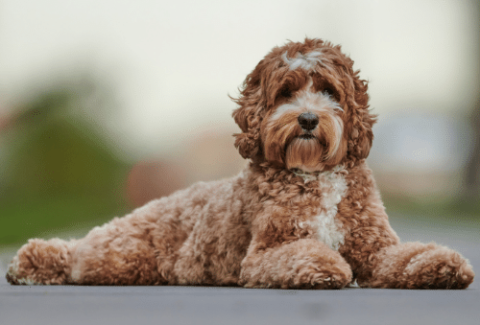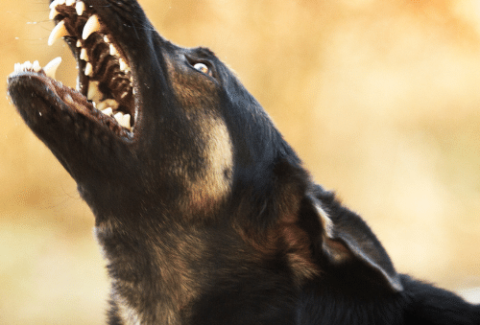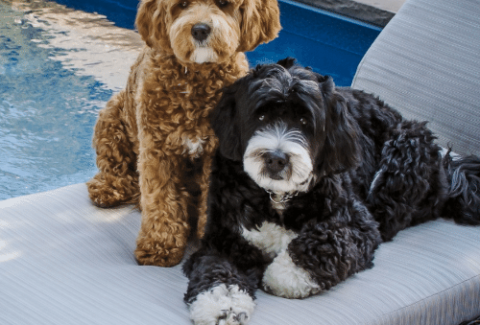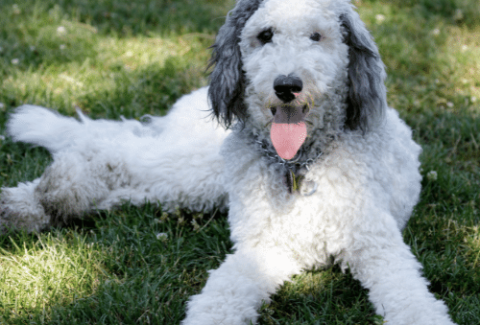15 Husky Eye Color Facts You Didn’t Know
May 21, 2021 2021-06-10 13:2115 Husky Eye Color Facts You Didn’t Know
Huskies eye color is one of the most striking features . Huskies are so well-known for having light-blue, green or mis-matched eyes that mix-breeds are often labeled a “Husky cross” solely based on one or two blue eyes.
Today we want to explore why Huskies show this great variation, which eye colors are the most common and most rare and if Huskies can see as well from blue eyes as from brown eyes!
Table of Contents
15 Facts about Husky Eye Colors
Blue Eyes Are Not Actually Blue
What …? It is true – your dog does not have blue pigment in his eyes. He simply has an absence of pigment. This causes the eye to appear blue, similar to how the sky looks blue from earth but not from the earth’s orbit.
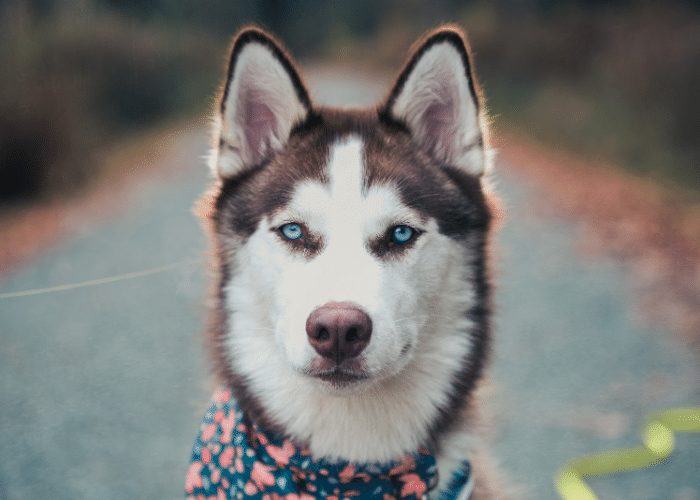
Huskies eye color is one of the most striking features . Huskies are so well-known for having light-blue, green or mis-matched eyes that mix-breeds are often labeled a “Husky cross” solely based on one or two blue eyes.
Today we want to explore why Huskies show this great variation, which eye colors are the most common and most rare and if Huskies can see as well from blue eyes as from brown eyes!
Table of Contents
15 Facts about Husky Eye Colors
Blue Eyes Are Not Actually Blue
What …? It is true – your dog does not have blue pigment in his eyes. He simply has an absence of pigment. This causes the eye to appear blue, similar to how the sky looks blue from earth but not from the earth’s orbit.

Blue Eyes In A Mix-Breed
If you have a mixed breed with blue eyes, this does not necessarily mean that he or she has a Husky parent. Other breeds can show blue eyes as well, such as Border Collies or Dalmatians.
When trying to guess your dog’s breeds, pay attention to other clues as well. If he is small, has a thin coat and drop ears chances are not a lot of Husky is to be found in his pedigree.
Huskies Can Have 1 or 2 Blue Eyes
Having eyes of two different colors is known as heterochromia. It is extremely rare in humans but occurs frequently in certain dog breeds, such as Huskies – but also Australian Shepherds and Border Collies.
Parents with two blue eyes can produce offspring with mismatched eyes, or eyes that both have the same color.
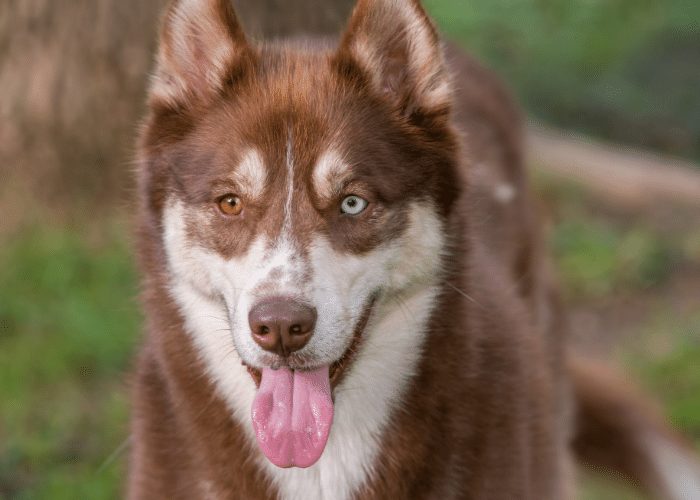
2 In 1
Huskies can not only have one blue and one brown eye, but actually two different colors in the same eye as well! This is also common in merle Border Collies and Australian Shepherds. Eyes with two colors are called parti-colored eyes and are more rare than all-blue eyes.
Puppy Eye Color
All Husky pups are born with blue eyes. They stay blue until the pups are 1-2 months old. Only then you can start to tell which ones will become completely brown and which will stay lighter. If you want to pick out your pup from a litter when the babies are just a few weeks old, it will not be possible to tell which one has blue eyes for certain.
Puppy Eye Color Can Keep Changing!
While some pups have their final eye color at 8-10 weeks of age, others keep changing. Some owners have reported that their growing Husky pups only reached their final eye color at 6 months.
Eye Color & Coat Color
In other breeds with blue eyes, they often appear in connection with a certain coat color or pattern. In Australian Shepherds for example blue eyes are more common in breeds with a merle coat pattern. In Huskies however, we can see blue eyes in dogs of any shade – light and dark colored dogs; brown, grey and back Huskies can have blue eyes.
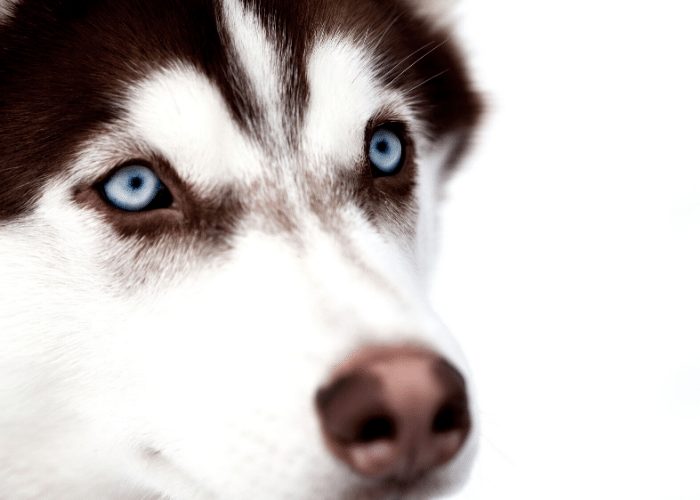
High Likelihood Of Blue Eyes
Huskies have an about 40% chance of having two blue eyes. Among dog breeds with blue eyes, they are definitely the ones with the highest prevalence! If you are looking to get a blue-eyes dog, this might be the breed for you.
Blue Eyes Are No Health Risk
Huskies as a breed are prone to cataracts which some believe to be connected to blue eyes. However, this is not true.
So where do the cataracts come from?
Huskies are more likely to develop cataracts because of a recessive gene that can cause this condition. If both parents have a copy of the gene, the puppies have a much higher chance of eye issues.
Regular Checkups Are Important
Because about 10% of Huskies has the genetic tendency to develop cataracts, you should schedule annual eye exams for your Husky. There a veterinarian can check that all is well with your pup’s beautiful eyes. If a condition is found early, it will also be much easier to address!
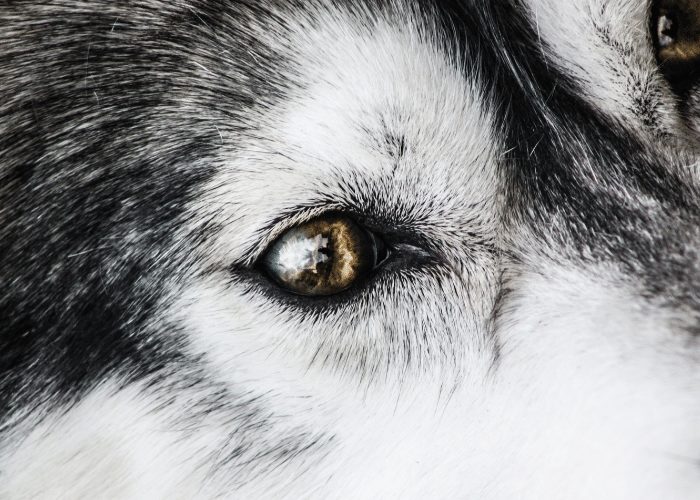
Husky Eye Color Has Been Studied Extensively
In a 2018 study, scientists evaluated the genetic data of over 6,000 dogs in order to find clues on Huskies’ eyes color. This included checking which genes might cause eyes to appear blue and seeing if they interfere with any other genes. To accomplish that, over 200,000 genetics markers were evaluated!
Husky Eyes Have Different Genes Than Human Eyes
Blue eyes in humans are regulated by two genes called HERC2 and OCA2. Even though one would expect that they are the same in Huskies, the gene responsible for our dogs’ blue eyes is a different one, called ALX4.
Chromosome #18
This specific gene lies on chromosome 18. Dogs have a total of 78 chromosomes – a few dozen more than we humans with our 46!
You Cannot Make The Eyes (More) Blue
Some owners really want their puppies’ eyes to turn blue and they try out different supplements and additives in their food – but this won’ be successful. Genetics alone determine your dog’s eye color, and nothing you feed is going to change this!
The same applies to feeding a specific supplement to turn dark blue eyes into a lighter shade of blue – it is not going to work.
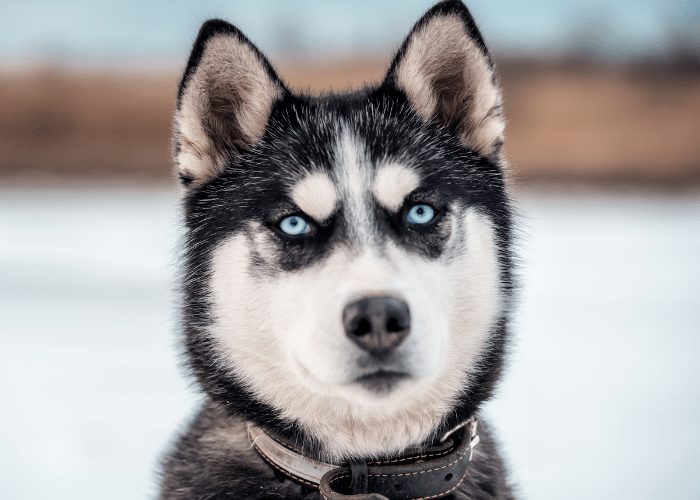
Sudden Blue Eyes Are A Sign Of Trouble
While Husky eye color can change until they are about half a year old, it will not change randomly later in life. If your adult Husky suddenly appears to have changed his eye color, take him to the vet – chances are that he has an eye condition that needs attention. This is especially true if the eyes appear to be of a hazy blue or grey.
The Bottom Line
Blue eyes are one of the key features of our beloved Huskies. Everyone who has a Husky with blue eyes has probably been stopped and gotten compliments many times on their walks together!
Apart from just looking great, the blue color has also been subject of extensive scientific studies. Dogs’ eye color is determined by a different gene than humans’ blue eyes. This gene can cause a single blue eye combined with a brown eye, two blue eyes or even an eye that is partially blue and partially brown.
Unfortunately, Huskies can have a genetic tendency to develop cataracts. This is not related to their eye color – a brown-eyes Husky has the same risk of developing it as a blue-eyes one (about 10%). You should take your pup to annual eye exams to catch any changes quickly and treat them effectively!
Blue Eyes In A Mix-Breed
If you have a mixed breed with blue eyes, this does not necessarily mean that he or she has a Husky parent. Other breeds can show blue eyes as well, such as Border Collies or Dalmatians.
When trying to guess your dog’s breeds, pay attention to other clues as well. If he is small, has a thin coat and drop ears chances are not a lot of Husky is to be found in his pedigree.
Huskies Can Have 1 or 2 Blue Eyes
Having eyes of two different colors is known as heterochromia. It is extremely rare in humans but occurs frequently in certain dog breeds, such as Huskies – but also Australian Shepherds and Border Collies.
Parents with two blue eyes can produce offspring with mismatched eyes, or eyes that both have the same color.

2 In 1
Huskies can not only have one blue and one brown eye, but actually two different colors in the same eye as well! This is also common in merle Border Collies and Australian Shepherds. Eyes with two colors are called parti-colored eyes and are more rare than all-blue eyes.
Puppy Eye Color
All Husky pups are born with blue eyes. They stay blue until the pups are 1-2 months old. Only then you can start to tell which ones will become completely brown and which will stay lighter. If you want to pick out your pup from a litter when the babies are just a few weeks old, it will not be possible to tell which one has blue eyes for certain.
Puppy Eye Color Can Keep Changing!
While some pups have their final eye color at 8-10 weeks of age, others keep changing. Some owners have reported that their growing Husky pups only reached their final eye color at 6 months.
Eye Color & Coat Color
In other breeds with blue eyes, they often appear in connection with a certain coat color or pattern. In Australian Shepherds for example blue eyes are more common in breeds with a merle coat pattern. In Huskies however, we can see blue eyes in dogs of any shade – light and dark colored dogs; brown, grey and back Huskies can have blue eyes.

High Likelihood Of Blue Eyes
Huskies have an about 40% chance of having two blue eyes. Among dog breeds with blue eyes, they are definitely the ones with the highest prevalence! If you are looking to get a blue-eyes dog, this might be the breed for you.
Blue Eyes Are No Health Risk
Huskies as a breed are prone to cataracts which some believe to be connected to blue eyes. However, this is not true.
So where do the cataracts come from?
Huskies are more likely to develop cataracts because of a recessive gene that can cause this condition. If both parents have a copy of the gene, the puppies have a much higher chance of eye issues.
Regular Checkups Are Important
Because about 10% of Huskies has the genetic tendency to develop cataracts, you should schedule annual eye exams for your Husky. There a veterinarian can check that all is well with your pup’s beautiful eyes. If a condition is found early, it will also be much easier to address!

Husky Eye Color Has Been Studied Extensively
In a 2018 study, scientists evaluated the genetic data of over 6,000 dogs in order to find clues on Huskies’ eyes color. This included checking which genes might cause eyes to appear blue and seeing if they interfere with any other genes. To accomplish that, over 200,000 genetics markers were evaluated!
Husky Eyes Have Different Genes Than Human Eyes
Blue eyes in humans are regulated by two genes called HERC2 and OCA2. Even though one would expect that they are the same in Huskies, the gene responsible for our dogs’ blue eyes is a different one, called ALX4.
Chromosome #18
This specific gene lies on chromosome 18. Dogs have a total of 78 chromosomes – a few dozen more than we humans with our 46!
You Cannot Make The Eyes (More) Blue
Some owners really want their puppies’ eyes to turn blue and they try out different supplements and additives in their food – but this won’ be successful. Genetics alone determine your dog’s eye color, and nothing you feed is going to change this!
The same applies to feeding a specific supplement to turn dark blue eyes into a lighter shade of blue – it is not going to work.

Sudden Blue Eyes Are A Sign Of Trouble
While Husky eye color can change until they are about half a year old, it will not change randomly later in life. If your adult Husky suddenly appears to have changed his eye color, take him to the vet – chances are that he has an eye condition that needs attention. This is especially true if the eyes appear to be of a hazy blue or grey.
The Bottom Line
Blue eyes are one of the key features of our beloved Huskies. Everyone who has a Husky with blue eyes has probably been stopped and gotten compliments many times on their walks together!
Apart from just looking great, the blue color has also been subject of extensive scientific studies. Dogs’ eye color is determined by a different gene than humans’ blue eyes. This gene can cause a single blue eye combined with a brown eye, two blue eyes or even an eye that is partially blue and partially brown.
Unfortunately, Huskies can have a genetic tendency to develop cataracts. This is not related to their eye color – a brown-eyes Husky has the same risk of developing it as a blue-eyes one (about 10%). You should take your pup to annual eye exams to catch any changes quickly and treat them effectively!
Steffi Trott
Related Posts
Are Labradoodles High-Maintenance?
At what age do Labradoodles calm down?
Are Pomeranians Good for First-Time Dog Owners?
Are German Shepherds Hypoallergenic?
Are German Shepherds Smart?
Are German Shepherds Vocal?
Are German Shepherds Good With Kids?
Do Bernedoodles like Water?
Do Bernedoodles Like Cats?
How Long Can Australian Shepherds Be Left Alone?
Check out our effective and affordable online dog training courses!
-
Sale Product on sale
 Tackling Reactivity Bundle
Tackling Reactivity Bundle
MONEY BACK GUARANTEE$564.00$49.00 -
Sale Product on sale
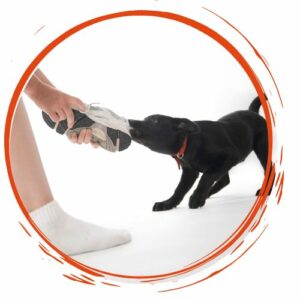 Perfect Obedience Bundle
Perfect Obedience Bundle
MONEY BACK GUARANTEE$349.00$49.00 -
Sale Product on sale
 Ultimate Puppy Bundle
Ultimate Puppy Bundle
MONEY BACK GUARANTEE$416.00$49.00 -
Sale Product on sale
 The Perfect Focus Bundle
The Perfect Focus Bundle
MONEY BACK GUARANTEE$445.00$169.00 -
Sale Product on sale
 Ultimate Masterclass Bundle
Ultimate Masterclass Bundle
MONEY BACK GUARANTEE$2,213.00$499.00


